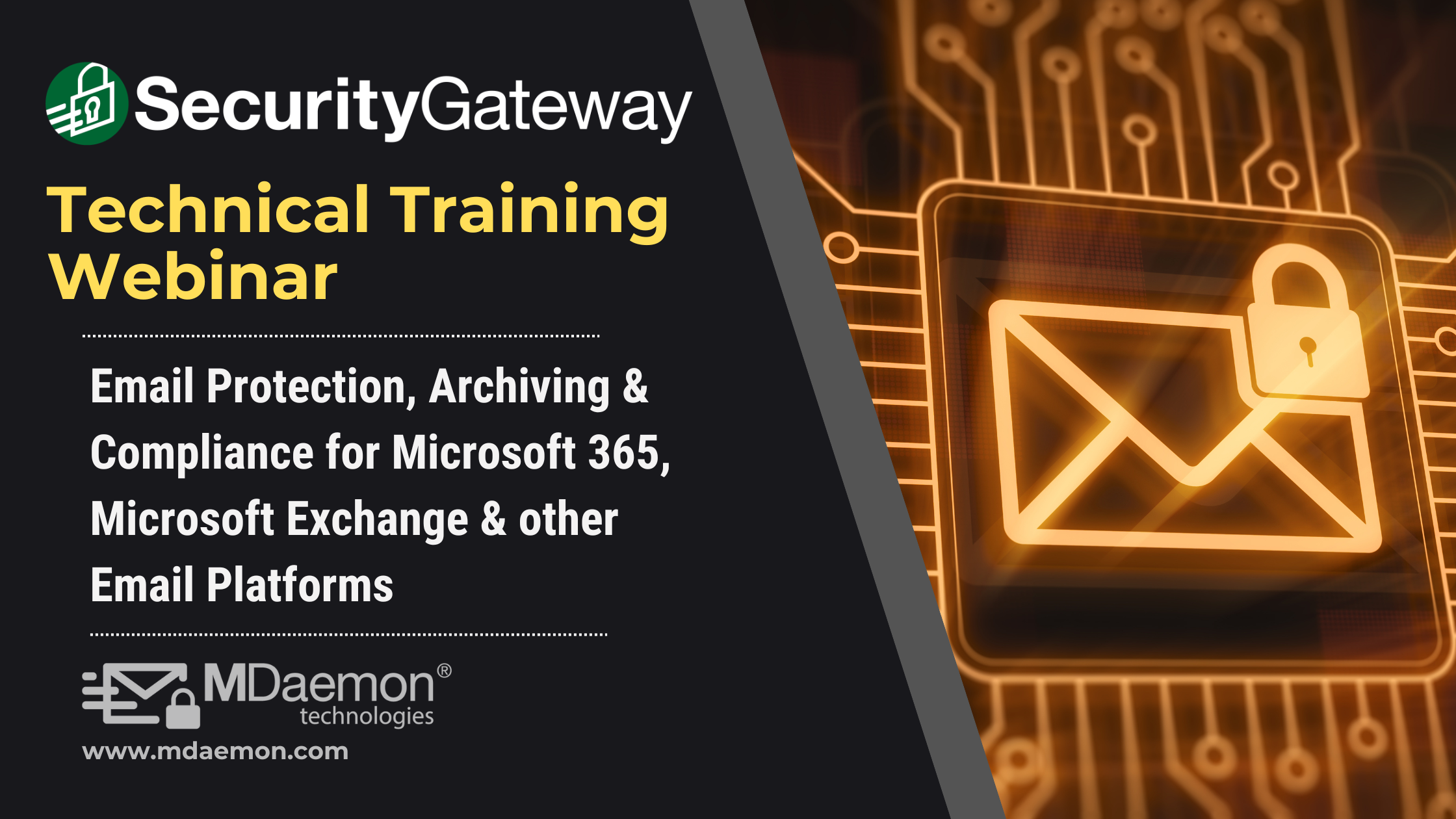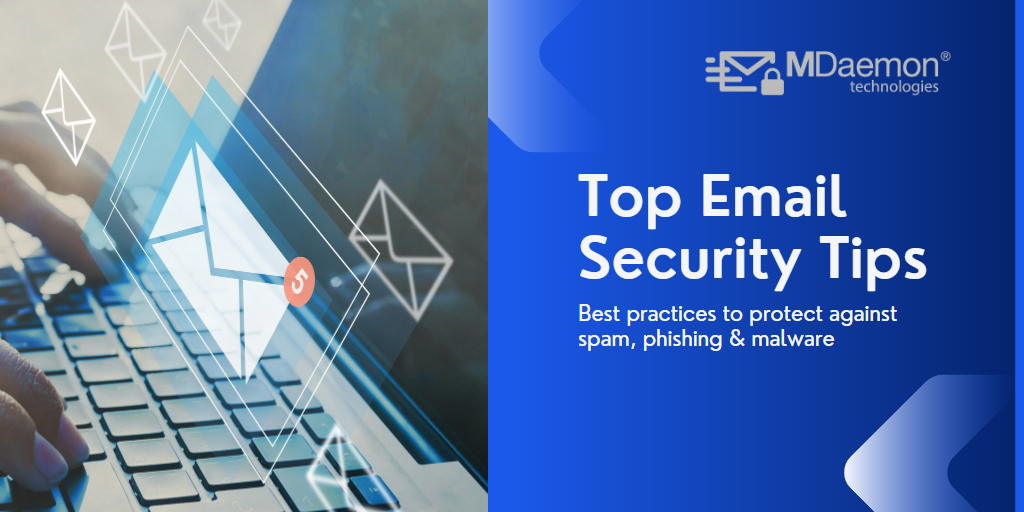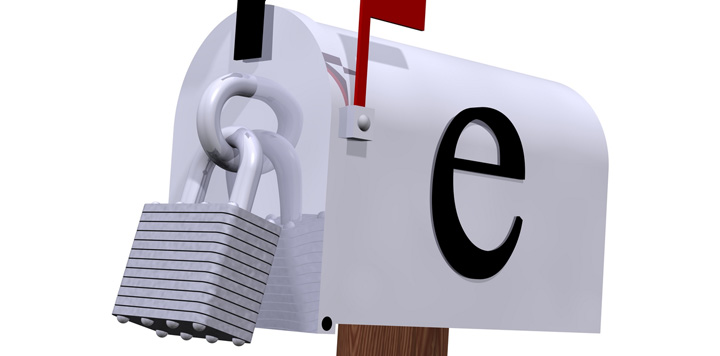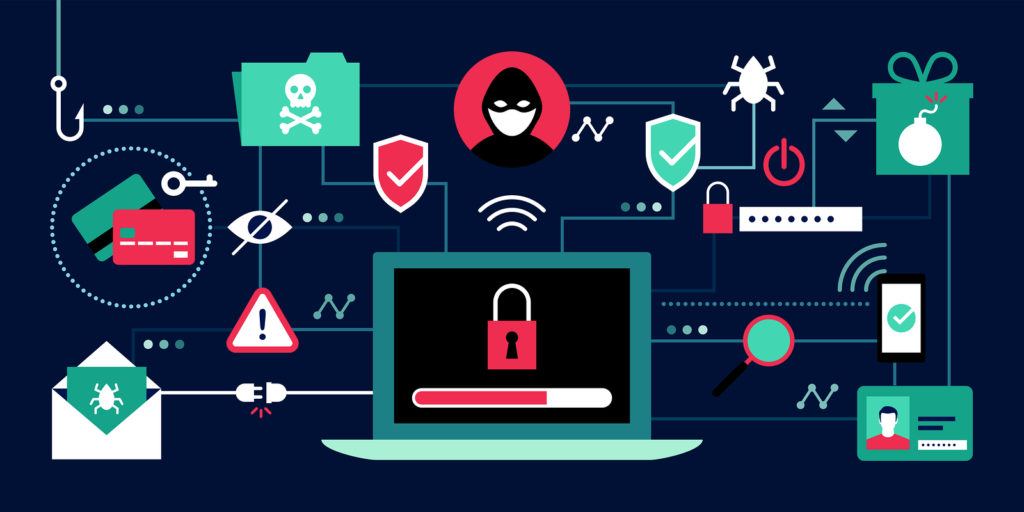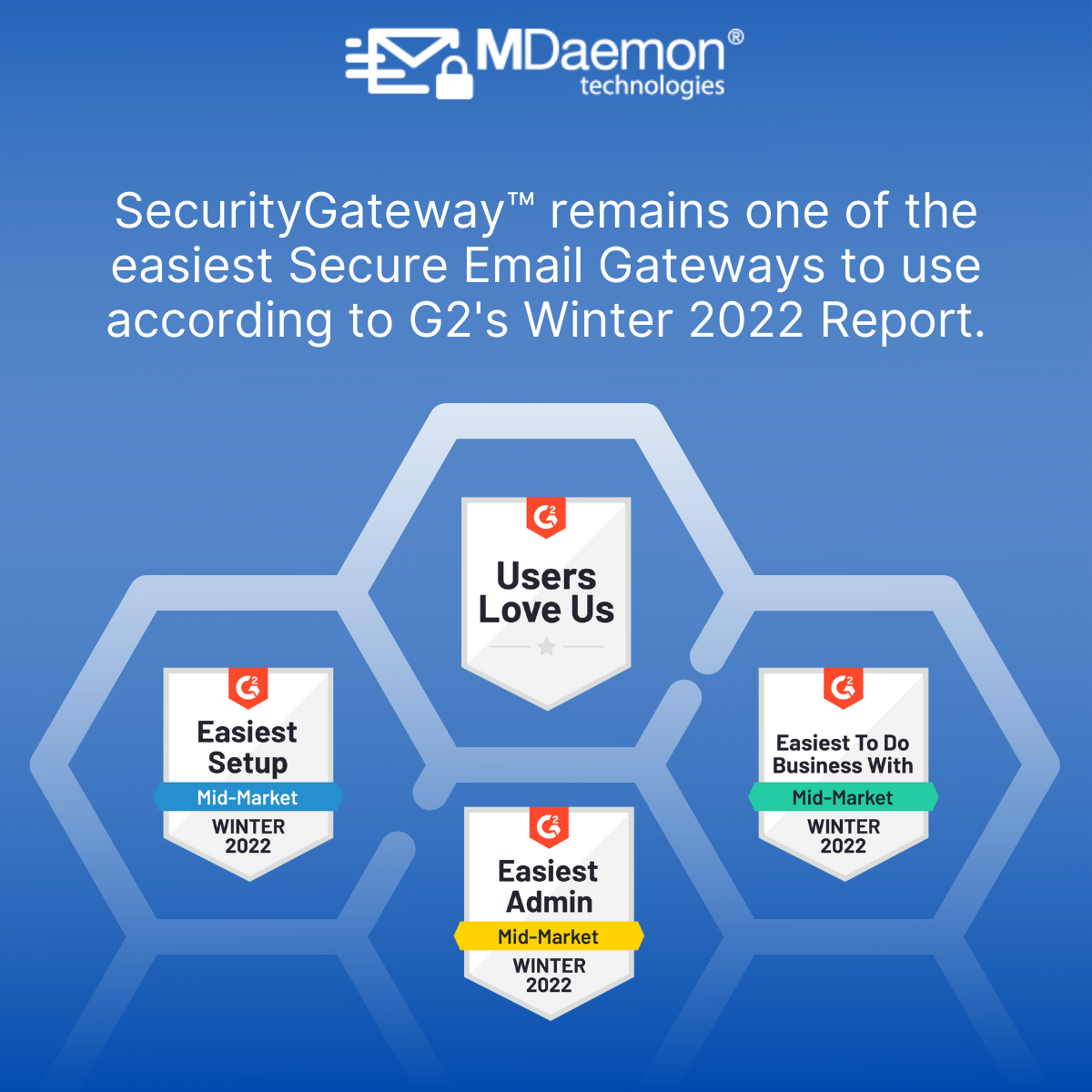Many businesses are finding that the email security and spam filtering features in Microsoft 365, Barracuda and other secure email gateway platforms just don't seem to get the job done in protecting businesses from spam, phishing, malware and data leaks. SecurityGateway™ for Email is a user-friendly alternative that includes anti-spam, anti-spoofing, and anti-abuse features, along with archiving and compliance, in an easy-to-use interface that includes color-coded email delivery charts & graphs to make administration & troubleshooting easy.
New SecurityGateway™ Technical Training webinar available: Spam filter & phishing protection for Microsoft Exchange Server & Microsoft 365
By Brad Wyro posted in Data Leak Prevention, Email Security, Anti-Spoofing, Security Gateway for Email, Email Archiving, Compliance, SecurityGateway
Top 9 Email Security Tips to Protect Against Spam, Phishing & Malware
By Brad Wyro posted in Anti-Relay, Attachments, Bayesian Learning, Content Filter, Data Leak Prevention, Email Authentication, DNS-BL, Email How To, Email Security, Macros, Cybersecurity, MDaemon Email Server, Security Gateway for Email, Spear Phishing, Email Spoofing, Anti-Virus, Backscatter, Phishing, Email Best Practices, Passwords
As cyber threats evolve, we face growing email security challenges. Hackers and cyber criminals relentlessly continue to attack businesses as users continue to fall for email scams. That’s why we must continue to be aware of the best practices for securing our email.
How MSPs Can Have Greater Control Over Secure Email Gateways
By Kevin Beatty posted in Cloud, Data Leak Prevention, Email Security, Cybersecurity, Anti-Spoofing, Security Gateway for Email, Stop Spam Email, Anti-Virus, Email Server, External Email Threats, internal email threat, msp
Beyond Hackers: Identify and Mitigate Insider Threats to Your Data
By Brad Wyro posted in Data Leak Prevention, Email Security, Cybersecurity, Anti-Spoofing, Security Gateway for Email, Spear Phishing, Email Spoofing, Phishing, insider threats
Jean Patrice Delia was an engineer at GE when he decided to steal company data and use trade secrets, pricing information, marketing data, and other documents and funnel them to his business partner to compete against GE. After an FBI investigation, Delia was arrested and sentenced to two years in prison and ordered to pay $1.4 million in restitution. His business partner, Miguel Sernas, spent nearly a year in jail and was also ordered to pay $1.4 million.
Users Love SecurityGateway™ for Email Servers in G2's Winter Reports
By Kevin Beatty posted in Data Leak Prevention, Email Security, Cybersecurity, Anti-Spoofing, Security Gateway for Email, Anti-Virus
G2 just released their Winter 2022 badges, and SecurityGateway™ for Email Servers continues to rank at the top of the Secure Email Gateway Software category.
Prevent Data Leaks with SecurityGateway™ for Email Servers
By Brad Wyro posted in Data Leak Prevention, Email Security
If you're a key decision maker in healthcare, government, finance, or any other highly regulated industry, how trusting are you of your employees to protect your company's most valuable asset - its data? Now that businesses have had over a year to adjust to remote work, they've had to put more trust in employees when it comes to the handling of personally identifiable information (PII) of their customers. This has led to a number of data breaches, HIPAA & GDPR violations, and many other incidents.
These key figures were reported earlier last year, and certainly by now these statistics have increased.
- Around 25% of email data breaches were caused by employees inappropriately sharing data
- Over 85% of employees are sending more emails as they continue to work from home
- About two-thirds of IT leaders have reported data leaks via email since the transition to remote work as a result of the pandemic
Data leaks can occur in many ways. The most common causes of data leaks are insider threats from within the business, hackers who have obtained access to compromised accounts, and users who fell victim to successful phishing and social engineering attacks.
Lessons from Data Breaches Improve Work From Home Security
By Brad Wyro posted in Data Leak Prevention, Email Security, Email Encryption, Stop Spam Email, Two-Factor Authentication, Email Best Practices
2020 has been a banner year for cybercriminals. They have stolen billions of dollars and data on billions of individuals by preying on widespread fear and uncertainty brought on by the COVID-19 pandemic.
Best Practices for Securing Work Devices from Any Remote Location
By Brad Wyro posted in Data Leak Prevention, Email Encryption, MDaemon Email Server, Security Gateway for Email, Email Server, Two-Factor Authentication, Email Best Practices
As we all know, unprecedented numbers of employees are working from home during this pandemic year. In fact, one recent survey by SaaS marketing agency Bay Leaf Digital found that 65 percent of newly WFH employees are now using company devices from home – and 42 percent are experiencing unstable access including issues with connecting to remote desktops, poor VPN, etc.
Got Employees Working From Home? How to Tighten Up Your Cyber Security
By Brad Wyro posted in Business Email Compromise, Data Leak Prevention, Email Privacy, Email Management, Phishing, Email Server
It’s OK, we understand. You thought you and your employees would all be safely back in the office by now. However, we’re all still adjusting to this new normal of exponentially more remote working – and exponentially more cyberattacks. Every day, hackers seek to exploit not only fear and insecurity caused by the pandemic, but the security loopholes created as more employees access their email and other work systems from remote devices. According to one report, streaming phishing sites saw an 85-percent increase from January to March, with more than 209 malicious websites being created every day. A record 25,000 confirmed phishing pages were created on March 19 alone!
3 Ways Security Gateway for Email Protects Healthcare from Data Breaches
By Brad Wyro posted in Archive, Data Leak Prevention, Email Gateway How-To, Email Privacy, Email Security, Security Gateway for Email, Health Care Security
Staying informed of the latest data privacy regulations as they apply to healthcare can be challenging. Not only are there a plethora of different security and retention requirements, but the risk of failure is higher than in any other sector:

